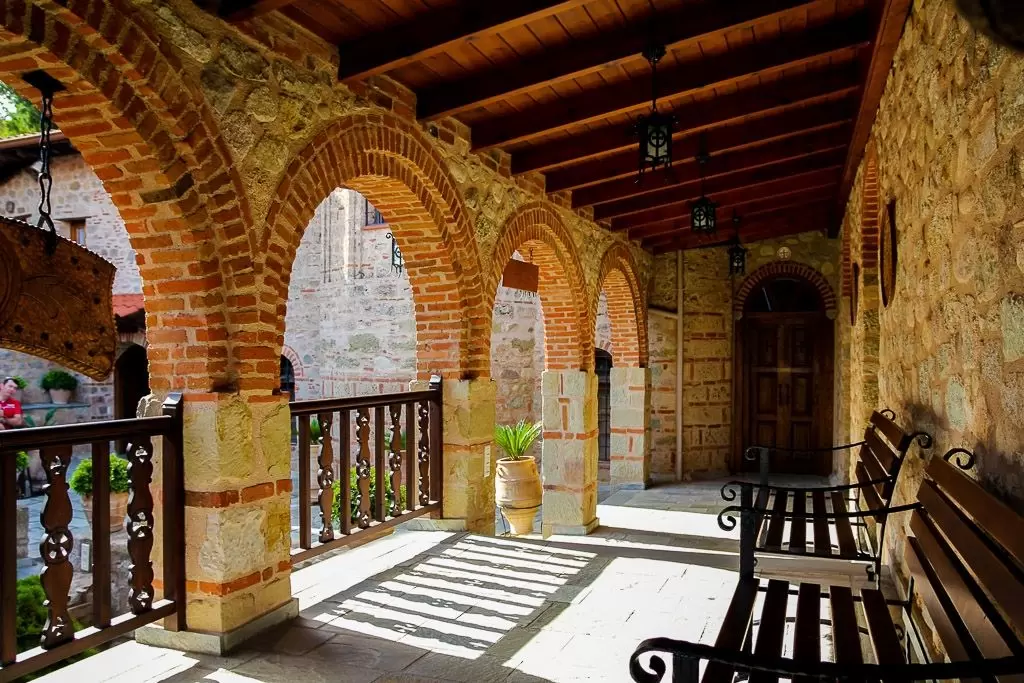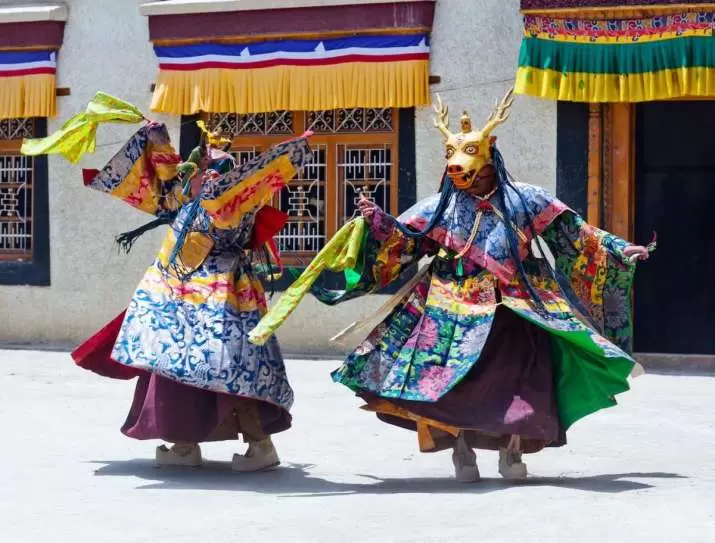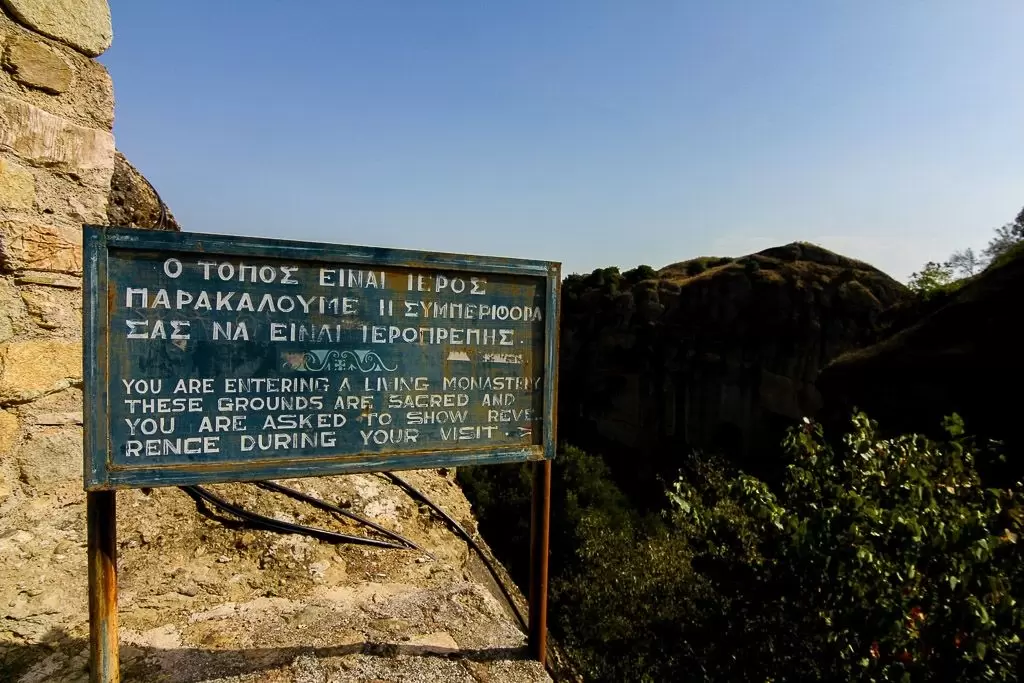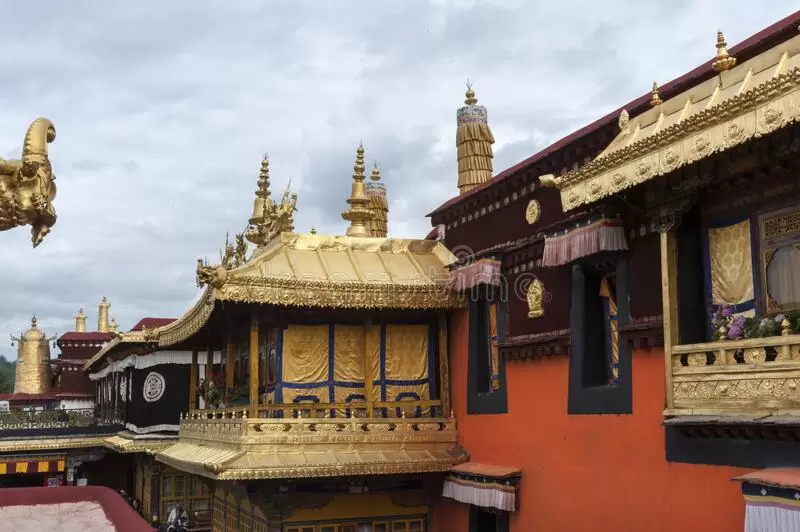Lhasa is known as the capital of Tibet and also the center of Tibetan Buddhism. This city is famous for its historical and cultural richness, especially its temples and monasteries. The temples and monasteries in Lhasa are built in memory of important figures in Tibetan Buddhism and therefore have great religious and historical significance.
One of the most famous temples in Lhasa is the Jokhang Temple. This temple is considered one of the holiest places in Tibetan Buddhism and is visited by thousands of visitors every year. Additionally, the Potala Palace is also an important structure located in Lhasa. This palace was used by Tibet's former leaders and now serves as a museum.
Other important monasteries in Lhasa include the Sera Monastery, Drepung Monastery, and Ganden Monastery. These monasteries are considered centers of the Gelugpa School, one of the leading schools of Tibetan Buddhism.
The temples and monasteries in Lhasa reflect the rich culture and history of Tibetan Buddhism. These structures help visitors discover and understand Tibet's religious and cultural heritage.
The Most Impressive Temples and Monasteries in Lhasa

Lhasa is known as the capital of Tibet and the center of Tibetan Buddhism. Therefore, there are many temples and monasteries in Lhasa. These temples and monasteries are an important part of Tibetan culture and history and are a great attraction for visitors.
One of the most impressive temples in Lhasa is the Jokhang Temple. This temple is one of the holiest places in Tibetan Buddhism and was built in the 7th century. The temple houses a statue of Sakyamuni, one of the most important figures in Tibetan Buddhism. In addition, there are many other statues, paintings, and works of art in the temple.
Another important temple is the Potala Palace. This palace is one of the most famous symbols of Tibet and was built in the 17th century. The palace was used as the official residence of the Dalai Lama, the leader of Tibetan Buddhism. Inside the palace, there are many temples, monasteries, and museums.
The Sera Monastery is also one of the most impressive monasteries in Lhasa. This monastery was built in the 15th century and belongs to the Gelug school of Tibetan Buddhism. The monastery offers many lessons and discussions about the philosophy and teachings of Tibetan Buddhism. In addition, there are many statues, paintings, and works of art in the monastery.
Finally, the Drepung Monastery is also one of the most impressive monasteries in Lhasa. This monastery was built in the 15th century and belongs to the Gelug school of Tibetan Buddhism. The monastery offers many lessons and discussions about the teachings of Tibetan Buddhism. In addition, there are many statues, paintings, and works of art in the monastery.
The temples and monasteries in Lhasa are an important part of Tibetan culture and history. These places are a great attraction for visitors and offer a lot of information about the teachings of Tibetan Buddhism. Therefore, it is recommended that everyone who visits Lhasa should visit these temples and monasteries.
Discovering the Historical Heritage of Tibet: Temples and Monasteries in Lhasa

Tibet is a region known worldwide for its historical and cultural heritage. The capital of Tibet, Lhasa, is famous for its historical temples and monasteries. These temples and monasteries preserve Tibet's historical and cultural heritage and attract visitors.
One of the most famous temples in Lhasa is the Jokhang Temple. This temple is one of the holiest places in Tibetan Buddhism and was built in the 7th century. The temple houses a statue of Padmasambhava, one of the most important figures in Tibetan Buddhism. Additionally, the temple contains many other Buddhist statues and works of art.
Another important temple in Lhasa is the Potala Palace. This palace was used as the residence of the former leaders of Tibet, the Dalai Lamas. The palace was built in the 17th century and has 13 floors. Inside the palace, there are the tombs of the Dalai Lamas and many valuable works of art.
The monasteries in Lhasa also play an important role in preserving Tibet's historical and cultural heritage. The Sera Monastery belongs to the Gelug school of Tibetan Buddhism and was built in the 15th century. The monastery houses the tomb of Tsongkhapa, one of the most important teachers of Tibetan Buddhism. Additionally, the monastery contains many other Buddhist statues and works of art.
Tibet's historical and cultural heritage is presented to visitors through the temples and monasteries in Lhasa. These temples and monasteries are an important stop for those who want to explore Tibet's rich history and culture. Additionally, these temples and monasteries serve as an important center of Tibetan Buddhism.
Mysterious Temples and Monasteries to Visit in Lhasa

Lhasa is known as the capital of Tibet and also the center of Tibetan Buddhism. Therefore, there are many mysterious temples and monasteries in Lhasa. These temples and monasteries are places that must be visited by those who want to learn about Tibetan culture and history.
The most famous of these is the Potala Palace. Built in the 13th century, this palace is the official residence of the Dalai Lama, the most important leader of Tibetan Buddhism. The palace has more than 1000 rooms and many temples and monasteries inside. In addition, the Red Palace on top of the palace is one of the most sacred places in Tibetan Buddhism.
Another important temple is the Jokhang Temple. Built in the 7th century, this temple is one of the most sacred places in Tibetan Buddhism. The temple was built by Songtsen Gampo, the founder of Tibetan Buddhism. The temple houses one of the most important statues of Tibetan Buddhism, the Jowo Sakyamuni statue.
The Sera Monastery is also one of the places to visit in Lhasa. Built in the 15th century, this monastery belongs to the Gelugpa school of Tibetan Buddhism. The monastery houses the tomb of Tsongkhapa, one of the most important teachers of Tibetan Buddhism.
Finally, the Drepung Monastery is also one of the places to visit in Lhasa. Built in the 15th century, this monastery belongs to the Gelugpa school of Tibetan Buddhism. The monastery is also where the Dalai Lama, one of the most important leaders of Tibetan Buddhism, received his education.
These mysterious temples and monasteries in Lhasa are places that must be visited by those who want to learn about Tibetan culture and history. These places were built by important leaders and teachers of Tibetan Buddhism and house some of the most sacred places in Tibetan Buddhism. Therefore, visitors to Lhasa are recommended to visit these temples and monasteries.
Journey to the Mystical World of Tibet: Temples and Monasteries in Lhasa

Tibet is known as a mystical world. This region has attracted the interest of many tourists worldwide for centuries. The capital of Tibet, Lhasa, is famous for its historic temples and monasteries. These temples and monasteries are important places that shed light on Tibet's culture and history.
One of the most famous temples in Lhasa is the Jokhang Temple. This temple is one of the holiest places in Tibetan Buddhism. The temple was built in the 7th century and is one of Tibet's oldest temples. The Jokhang Temple is home to some of Tibet's largest Buddhist statues and is visited by thousands of tourists every year.
Another important temple in Lhasa is the Potala Palace. This palace is one of Tibet's most famous structures and was built in the 17th century. The Potala Palace was used as the home of Tibet's ancient royal family. Today, the palace is used as a museum and is visited by tourists.
The monasteries in Lhasa are also important places to journey into Tibet's mystical world. The Sera Monastery is one of Tibet's largest monasteries and was built in the 15th century. The monastery belongs to the Gelug school of Tibetan Buddhism and is visited by tourists.
Journeying into Tibet's mystical world begins with the temples and monasteries in Lhasa. These places shed light on Tibet's culture and history and help tourists discover Tibet's mystical world. The temples and monasteries in Lhasa are important places not to be missed for a journey into Tibet's mystical world.
What You Need to Know About Temples and Monasteries in Lhasa: History, Culture, and Traditions

Lhasa is known as the capital of Tibet and also the center of Tibetan Buddhism. Therefore, there are many temples and monasteries in Lhasa. These temples and monasteries contain important information about Tibetan culture and traditions.
One of the most famous temples in Lhasa is the Jokhang Temple. This temple is one of the holiest places in Tibetan Buddhism and was built in the 7th century. The temple houses a statue of Sakyamuni, one of the most important figures in Tibetan Buddhism. In addition, there are many other statues and artifacts in the temple.
In addition, the Potala Palace in Lhasa is also important for Tibetan culture and history. This palace is where the former leaders of Tibet, the Dalai Lamas, lived. The palace was built in the 17th century and has 13 floors. Inside the palace, there are rooms where the Dalai Lamas lived, temples, and museums.
Other important temples in Lhasa include the Sera Monastery, Drepung Monastery, and Ganden Monastery. These monasteries belong to different schools of Tibetan Buddhism and each has a different historical and cultural significance.
The temples and monasteries in Lhasa contain important information about Tibetan culture and traditions. These places offer visitors the opportunity to explore different aspects of Tibetan Buddhism and Tibetan history. In addition, the architecture and artwork of these places are also remarkable and attract visitors' attention.

Comments